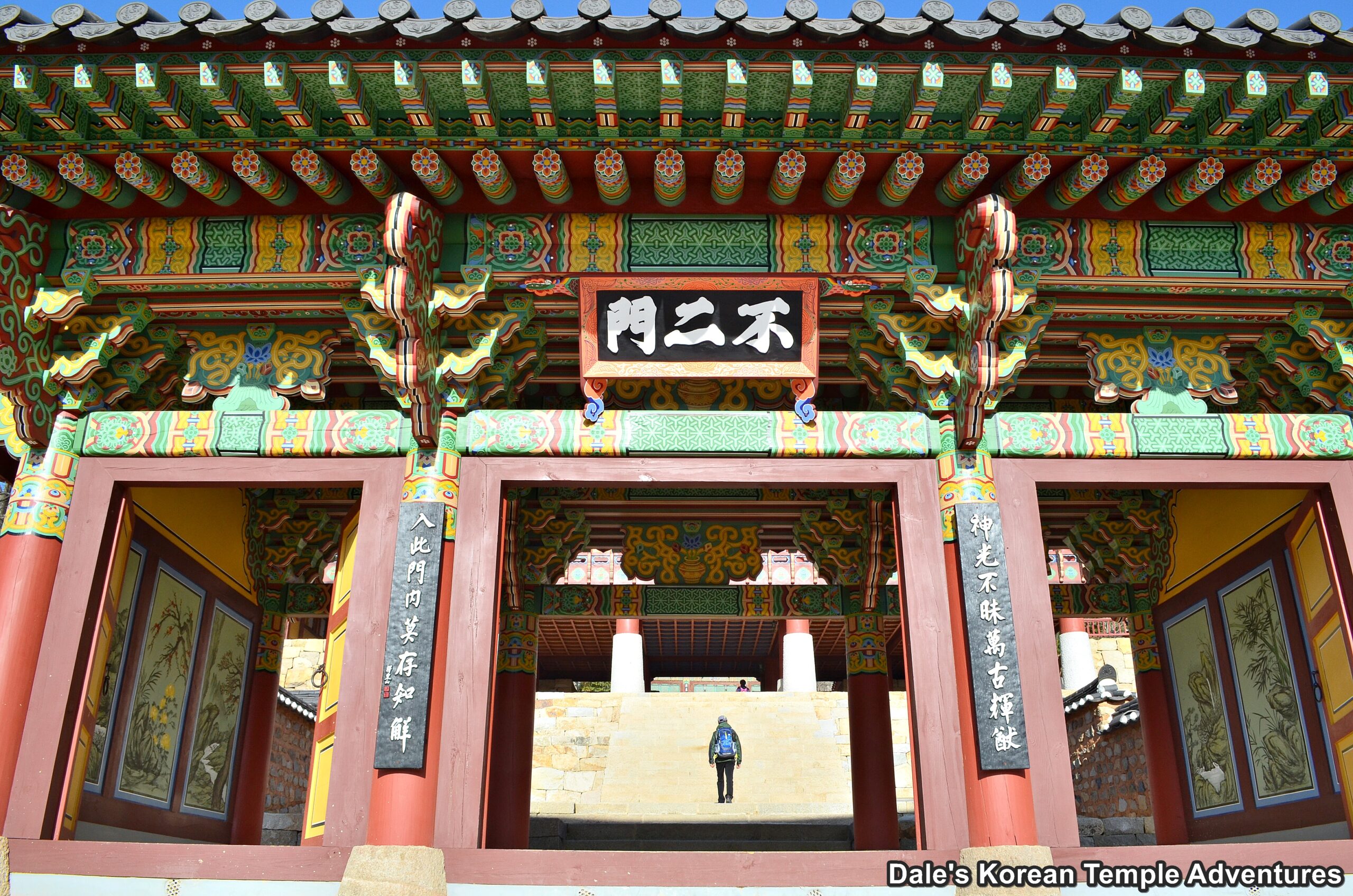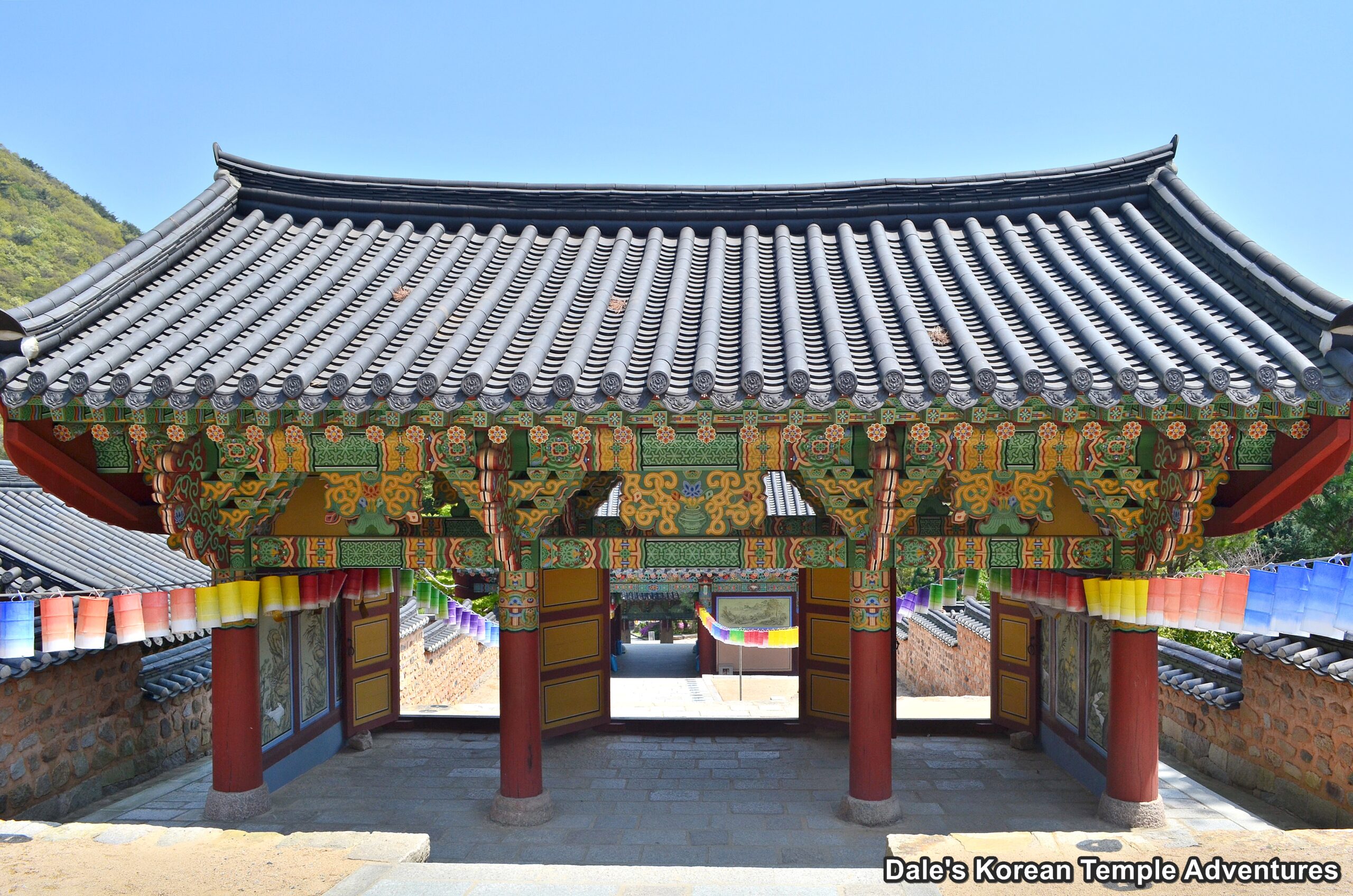Bulimun – The Gate of Non-Duality: 불이문
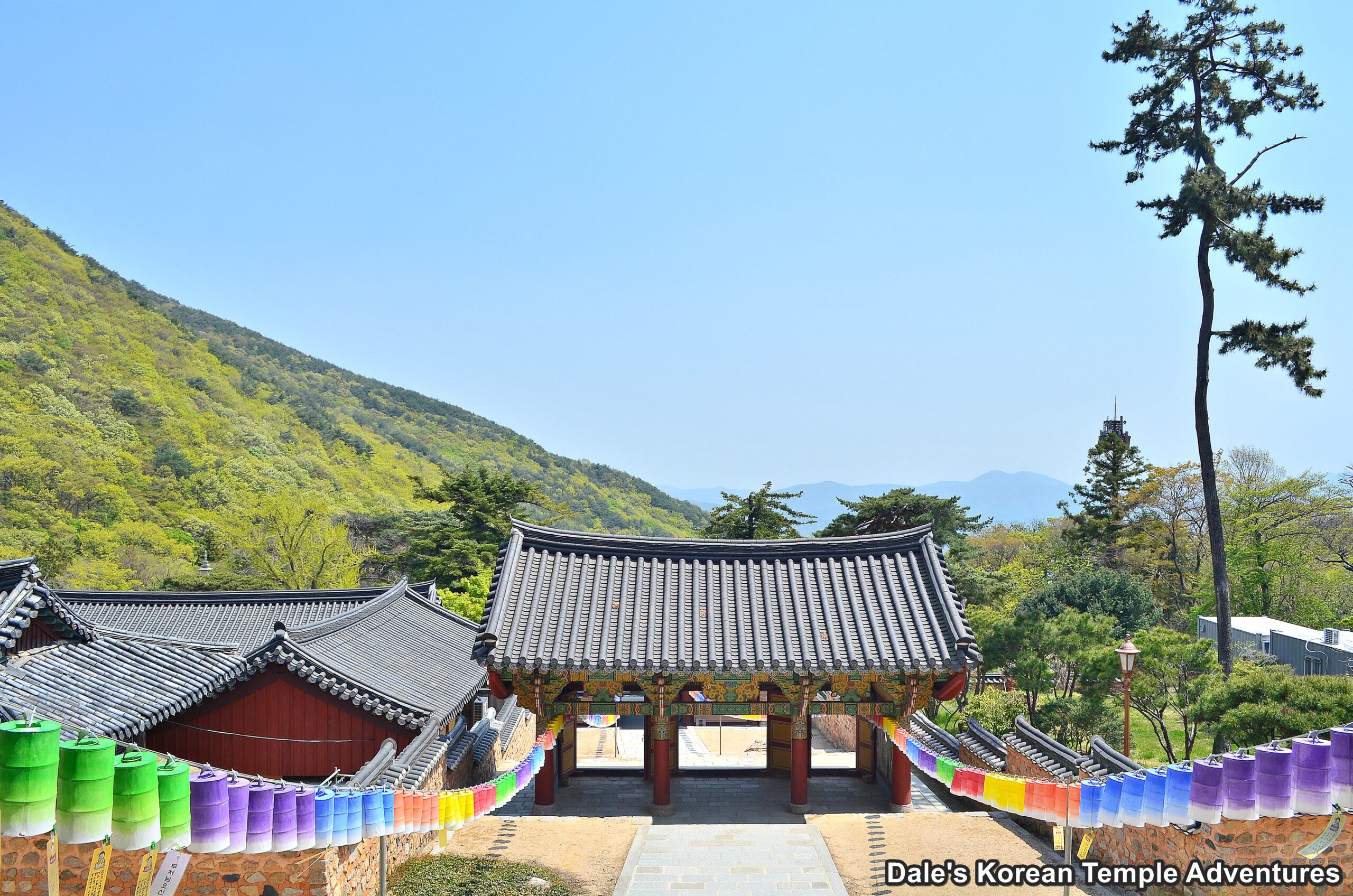
Bulimun Gate Design
The fourth potential gate at a Korean Buddhist temple is the Bulimun Gate, which means “The Gate of Non-Duality,” in English. At some temples, instead of being called a Bulimun Gate, it’s called the Haetalmun Gate, or the “Gate of Liberation,” in English. And even rarer, it’s sometimes called the Yeolbanmun Gate, or the “Nirvana Gate,” in English. These gates are usually adorned with beautiful pastoral paintings. Also, the structure itself can look similar in design to an Iljumun Gate in its open-pillar design like at Beomeosa Temple; however, it can also resemble the enclosed design of a Cheonwangmun Gate like at Tongdosa Temple. The greatest indicator that you’re passing through a Bulimun Gate is that it’s the fourth, in a succession of gates, at a temple.
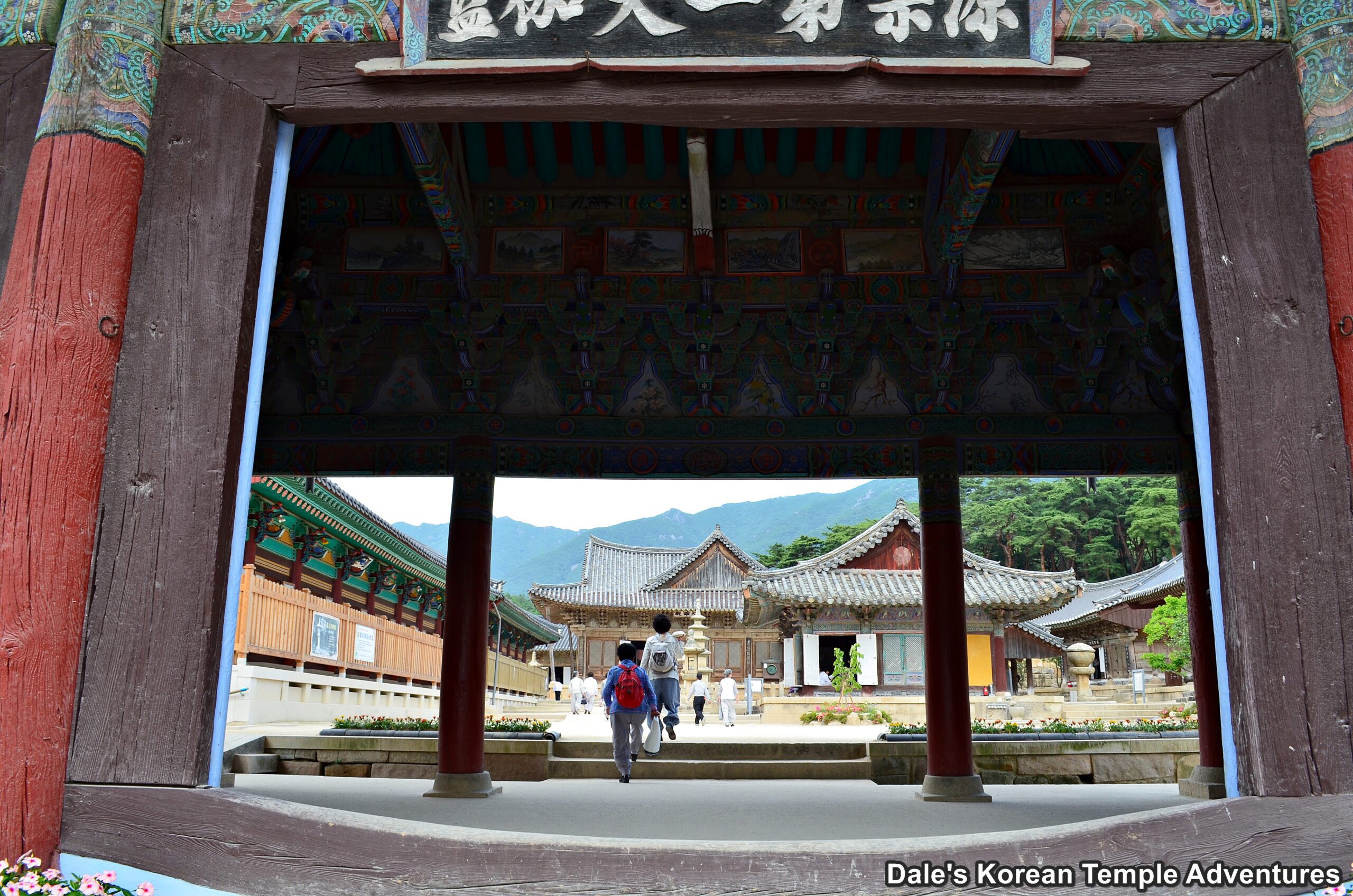
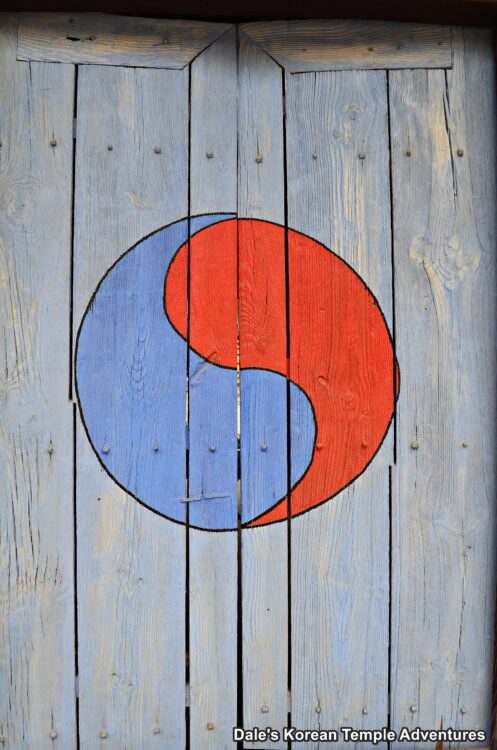
“The Gate of Non-Duality,” or Bulimun Gate, refers to a central tenet in Buddhism; namely, that all things are one. That things like birth and death, good and evil, love and hate, are not in fact two, but they are one in the same. By freeing oneself of this discriminatory binary worldview, we rid ourselves of our ego and the selfishness that comes as a result of it. Instead, everything, and everyone, is one.
Following up on this idea of non-dualism, and finding a textual grounding for this in Buddhist writings, one only needs to look as far as the Vimalakirti Sutra. In this central Buddhist sutra, one gains a better understanding of the meaning behind the Bulimun Gate. In this sutra, which is central to Korean Seon Buddhism, it focuses on an elder layman and house-owner that lived at the same time as Seokgamoni-bul (The Historical Buddha). Specifically, there’s a chapter in the Vimalakirti Sutra called “The Dharma Door of Non-Duality.” In this chapter, a Bodhisattva is about to enter the Dharma Door of Non-Duality. The discussion turns to how a Bodhisattva enters the Dharma Door of Non-Duality; and thus, enters Buddhahood. Several Bodhisattvas expressed their profound ideas both wisely and eloquently; however, when it was Vimalakirti’s turn, he remained silent. His silence demonstrated the subtleness it takes to gain enlightenment in Buddhism.
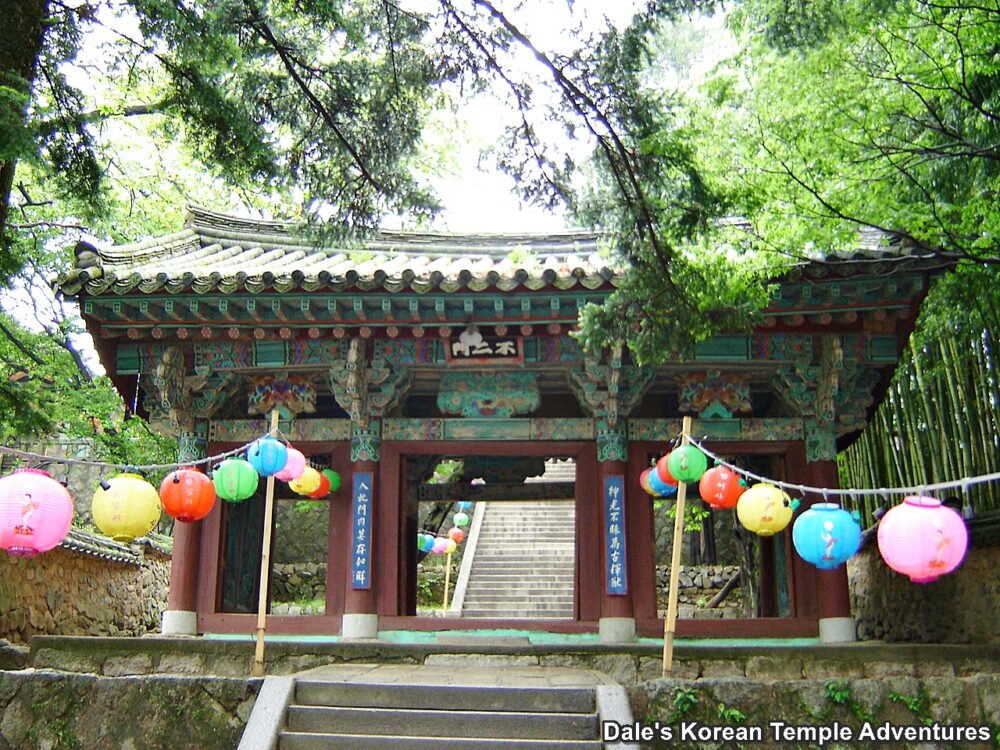
In combining these two ideas of the elimination of duality and the subtleness of silent enlightenment, one is symbolically able to free oneself from the burdens of suffering and ultimate delusion as one passes through the Bulimun Gate at a Korean Buddhist temple.
Great Bulimun Gate Examples
Beautiful examples of a Bulimun Gate, or the “Gate of Non-Duality,” can be found at Tongdosa Temple in Yangsan, Gyeongsangnam-do and Beomeosa Temple in Geumjeong-gu, Busan.
